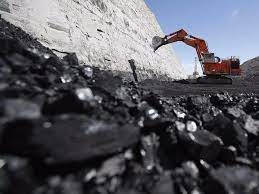Govt plans to quadruple domestic coal-fired energy
Pakistan plans to quadruple its domestic coal-fired capacity to reduce power generation costs and will not build new gas-fired plants in the coming years, the energy minister told Reuters, as it seeks to ease a foreign exchange crisis.
A shortage of natural gas, which accounts for over a third of the country’s power output, plunged large areas into hours of darkness last year. A surge in global prices of liquefied natural gas (LNG) after Russia’s invasion of Ukraine and an economic crisis had made LNG unaffordable.
“LNG is no longer part of the long-term plan,” Energy Minister Khurram Dastgir Khan said, adding that the country plans to increase domestic coal-fired power capacity to 10 gigawatts (GW) in the medium term, from 2.31GW currently.
Pakistan’s plan to switch to coal to provide its citizens reliable electricity underscores the challenges in drafting effective decarbonisation strategies, at a time when some developing countries are struggling to keep lights on.
Despite power demand increasing in 2022, annual LNG imports into Pakistan fell to the lowest levels in five years as European buyers elbowed out price-sensitive consumers.
“We have some of the world’s most efficient regasified LNG-based power plants. But we don’t have the gas to run them,” Dastgir said in an interview.
The South Asian nation is seeking to reduce the value of its fuel imports and protect itself from geopolitical shocks, he said.
Its foreign exchange reserves held by the central bank have fallen to $2.9 billion, barely enough to cover three weeks of imports.
“It’s the question of not just being able to generate energy cheaply, but also with domestic sources that is very important,” Dastgir said.
Shanghai Electric Thar plant, a 1.32GW capacity plant that runs on domestic coal and is funded under the China-Pakistan Economic Corridor (CPEC), started producing power last week.
In addition to the coal-fired plants, the country also plans to boost its solar, hydro and nuclear power fleet, Dastgir said.
If the proposed plants are constructed, it could also widen the gap between power demand and the installed power generation capacity, potentially forcing the country to idle plants.

